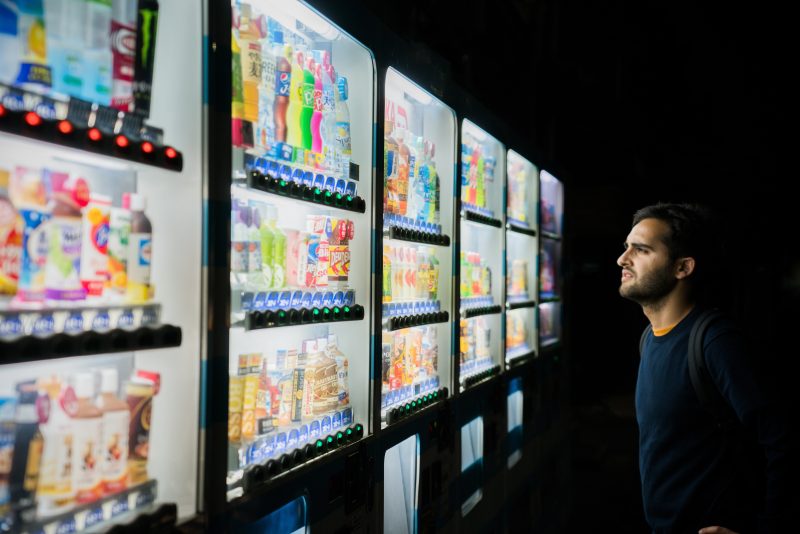Calorie counting isn’t the most effective method for changing nutritional habits. It’s really just a craze of sorts. Although, it has its place and time. Instead of obsessively tracking food and beverage consumption, encourage a mindful eating approach with your clients.
Why Calorie Counting Doesn’t Work
Calorie counting may be able to create awareness of an average energy intake, but it most likely will not lead to sustainable behavior change. Mostly, because the focus isn’t on the process. Instead, the focus is on quantifying eating habits.
A calorie is defined as the amount of energy required to raise the temperature of 1 gram of water by one degree Celsius. This means that a calorie, from a physics perspective, is simply a unit of energy. A calorie is a calorie thermogenically but not metabolically regardless of the source of that calorie (fried food versus a piece of fruit, for example).

However, metabolically, calories are not equal. This means the focus is on the quality and not the quantity. Those are two different concepts.
Truthfully, the human body wasn’t designed to be fueled by artificial products, chemical preservatives, and high amounts of sugar and sodium. These are all components of processed foods. So how do we change this? Well, we start by focusing on the process of eating consciously.
Eating Consciously
If you had to make a guess, how many of your clients (or you) eat in a conscious and mindful way? It’s probably a smaller percentage than we would like to admit. In part, this is just human nature and the busy lives we lead don’t always support conscious choices.
Too often we eat “by the clock” – if it’s noon, it’s time for lunch. Or, the presence of an open candy dish in the break room invites indulgence.
When a nutritional choice is a product of influence rather than of a conscious thought process, we neglect to listen to our intuition and eat out of convenience rather than a physiological need to refuel the body and mind. To really impact change and influence our clients, we need to elevate the level of consciousness.
While the scope of practice for personal trainers is limited when it comes to nutrition, we can and should be talking to our clients not only about what they eat but why they consume the foods they do.
What is it that is the most appealing? Quick? Cheap? Doesn’t require preparation?
The reasons why clients choose the foods they do reveal quite a bit about perceived barriers to quality consumption. Once we understand the barriers, we can help clients explore solutions that fit their needs and address those barriers.
Conscious Eating Teaching Tools
Conscious eating is not about complicating nutritional practices or encouraging clients to become culinary artists in order to eat healthily. Being a conscious eater means actively engaging in a thought process to choose foods that are clean and nutritionally dense (vs. energy dense).
If the approach is caloric restriction, it’s common for a client to see a 100-calorie snack pack of “healthy cookies” as better than 150 calories worth of fruit and nuts. Why? Because 100 is less than 150. This is where we can ignite the change process by demonstrating the value of quality over quantity and discussing the benefits of “cleaner-burning” fuel sources.
Coaching Clients to Eat Consciously
Here are five themes to focus on when working with clients on mindful eating.
Ingredients over calories. What are the ingredients in the food? Is the list long and involved and read like gibberish? Our bodies don’t need substances such as carrageenan, potato starch, and maltodextrin.
Fresh is generally best. Think about apples, oranges, squash, and other fresh produce items. They don’t come with ingredient labels – they aren’t necessary. They are whole foods and unprocessed. Compare this to a bag of “veggie” chips. Ask the critical thinking questions such as “is this item close to the earth or close to its most natural state?”
Sneaky sugars. Help clients learn to identify hidden and added sugars in foods. This is not to demonize sugar, but to help clients understand added sugar in common foods such as yogurt, marinara sauce, salad dressings, canned fruit, and cereals. Common aliases for sugar include barley malt, brown rice syrup, dextrose, dextrin, corn syrup solids. And these are just a few!
Low fat is not “better”. When fat is removed from a food, something has to take the place of the flavor that’s loss. This usually comes in the form of sodium or sugar.
Fun with herbs. Herbs and spices are fantastic ingredients to add to a variety of recipes. If your clients fear a loss of flavor, teach them how to use different herbs to enhance the flavor and nutrient profile of any dish.
The number of calories in a food is a minor piece to the larger puzzle of nutritional quality. Give your clients the tools to help them consciously and critically evaluate the food choices they make.
[info type=”facebook”]Join the Facebook Community Group to meet other trainers.[/info]



